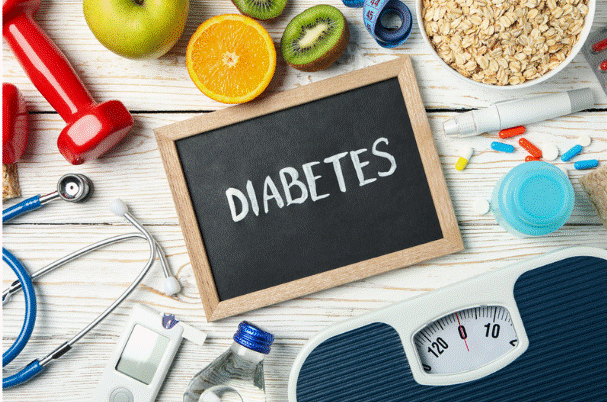November is a Time to Highlight Diabetes
 In Kansas, about 11% of the adult population has diabetes and it is the sixth leading cause of death in Kansas. Diagnosed diabetes costs an estimated $2.4 billion in Kansas each year.
In Kansas, about 11% of the adult population has diabetes and it is the sixth leading cause of death in Kansas. Diagnosed diabetes costs an estimated $2.4 billion in Kansas each year.
Each year in November, we highlight diabetes during National Diabetes Month. Diabetes is no longer a disease that you get when you are older. In fact, many of us have friends, relatives, and colleagues who are either pre-diabetic or diabetic.
Let’s quickly do a crash course into diabetes. It is a disease that occurs when your blood glucose (also known as blood sugar) is too high. Individuals with poorly managed diabetes are at a greater risk for damage to eyes, kidneys, nerves, heart and even may have an increased risk of some cancers.
The two most common types of diabetes are type 1 and type 2. Type 1 is when the body cannot produce insulin and is commonly diagnosed when young. These individuals need to be on insulin for life.
The most common type is type 2 which occurs when the body has stopped producing insulin and is found among adults who are overweight or obese. Of those with diabetes, 95 percent are type 2.
The good news? People who are at high risk for type 2 diabetes can lower their risk by more than half if they make healthy changes, like eating healthy, getting more physical activity, and losing weight.
Here are some tips to help you manage prevent or manage your diabetes to stay healthy.
- Move your body every day. Aim to get at least 150 minutes of moderate physical activity a week such as walking or biking. Remember every little bit of movement helps your body!
- Maintain a healthy body weight. If you are currently overweight or obese, losing as little as 7 to 10 percent of your current weight can cut your chances of developing type 2 diabetes in half.
- Tune up your diet. Choose whole grains over highly refined processed grains. Skip the sugar-sweetened beverages. Eat healthy fats like olive oil, avocado, and those found in fish.
- Don’t smoke. Either quit or do not start as smokers are about 50 percent more likely to develop diabetes than nonsmokers.
- Consume alcohol in moderation. One drink a day for women and two drinks a day for men is the recommended amount for moderate consumption. Excess alcohol increases your risk for type 2 diabetes.
Dining with Diabetes
If you are interested in learning how to improve your diabetes, we offer a program called Dining with Diabetes. The program's focus is to help individuals learn strategies to lessen the health risks of diabetes and is for anyone regardless of your diabetes status. The program is designed for people with diabetes and their family members, caregivers, and support persons. Visit https://www.johnson.k-state.edu/health-nutrition/dining-with-diabetes.html to see our upcoming classes and learn more.
Need more ideas on how to eat healthier or be a little more active? Sign up for our In Good Health Johnson County e-newsletter to get tips and tricks and a nutritious recipe each month.